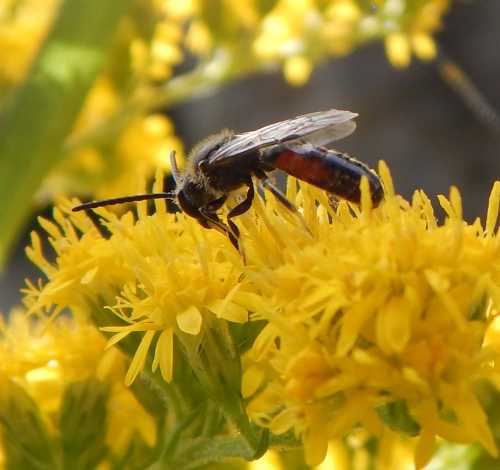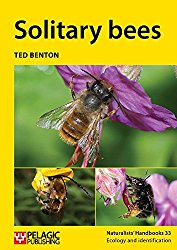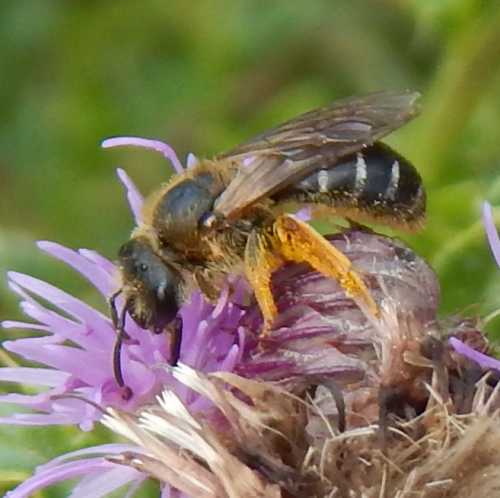Lasioglossum smeathmanellum: Smeathman’s Furrow Bee
Updated: 24th February 2021
Did you know, that some bees are so tiny, they could easily be mistaken for little flies? In fact, this describes many solitary species, including Lasioglossum smeathmanellum.
I like to take my camera with me on sunny days, to snap any photographs of interesting insects – including bees, flies, butterflies and other pollinators. It’s true that I have hundreds and hundreds of unsorted photographs of various invertebrates I simply have not had time to identify, catalogue, and write about, but I thought I would like to write a few lines about this one.
Anyway, one April morning, I took my camera with me as I went for a walk with our spaniel, Charlie. Whilst out, I was pleased to see Lasioglossum smeathmanellum foraging on dandelions.
Lasioglossum smeathmanellum
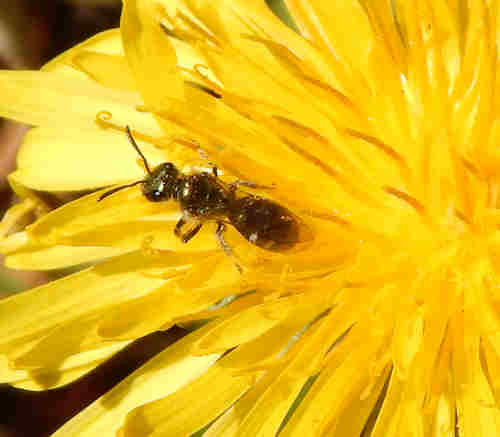 Above: Easy to miss! Lasioglossum smeathmanellum
Above: Easy to miss! Lasioglossum smeathmanellumThis species is one of 4 metallic Lasioglossum found in Britain, and this bee is most commonly found in southern England and Wales, but scarcer in Northern England, Scotland and Ireland.
Although in flight from around April to September, according to some sources, it is believed the male is not usually around until July.
As stated, this little bee-fellow is Lasioglossum smeathmanellum – and I love the common name, which I understand (courtesy of Steven Falk’s excellent book, Field Guide To Bees Of Great Britain And Ireland) to be Smeathman’s Furrow Bee.
If you look closely, it’s possible to detect a greenish, metallic sheen to the body, with tomentose (woolly-looking patches of tiny, flattened hairs) on the tergites (abdominal segments) 2 and 3 (where tergites 1 is nearest to the thorax) and sparingly on tergite 4 (although as stated, the photographs aren't that great).
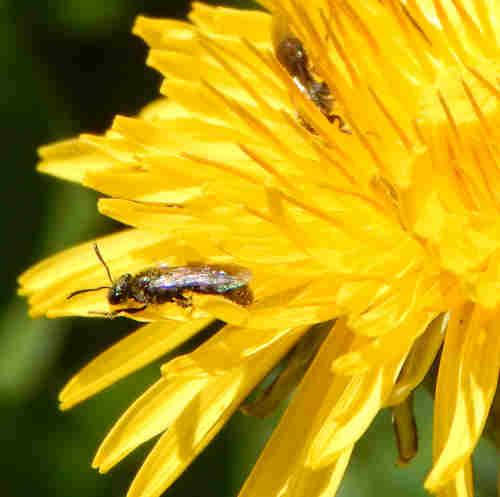 Above: Lasioglossum smeathmanellum are tiny, metalic bees. Smeathman’s Furrow Bee - is the common name for this little bee.
Above: Lasioglossum smeathmanellum are tiny, metalic bees. Smeathman’s Furrow Bee - is the common name for this little bee.I note at the time of writing that BWARS – the Bees Wasps and Ants Recording
Society, state this species measure around 4.5mm in length. Experts don’t always agree, however. For example, another well regarded Biologist
and wildlife photographer, Ed Phillips, records this species as having a length
of around 6-7mm in length, which would also be my assessment.
Male and female
Both males and females were present, and even in the same flower, as can be seen below.
The male (pictured right) is smaller than the female, with a narrower, more petite body, and with longer antennae than the female.
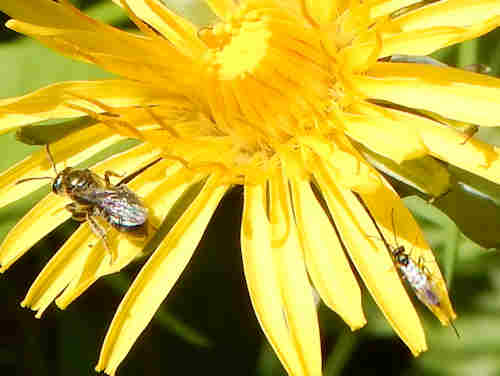 A female (left) and male (right) Smeathman’s Furrow Bee.
A female (left) and male (right) Smeathman’s Furrow Bee.Habitat and foraging
These bee species will visit a variety of flowers and shrubs. I saw quite a few of them, foraging on dandelions, a favourite with many bee species.
The
local habitat is perfect: a brownfield site, featuring old wall – where they nest in aggregations,
plenty of wildflowers – I’ve written about it elsewhere – and including of course,
the dandelions. They may also be seen around rock cliffs, quarries and sometimes in gardens.
 Charlie
CharlieIf you found this page helpful or interesting, I'd really be grateful if you would share it with others - if not this page, perhaps another, such as Gardening For Bees.
Thank you so much :) .
